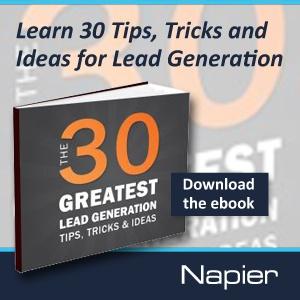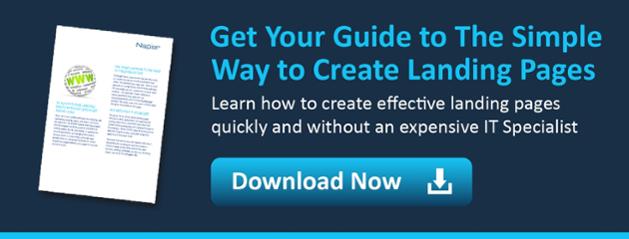Apprenticeship graduation and next steps
In this latest apprenticeship blog, Taylor from our team at sister agency Peter Bush Communications talks about her apprenticeship experience and what's coming next for her...head over to the Peter Bush Communications site to read Taylor's Blog.
Interempresas Media announces new publication Eurofach Electronica
The publishers of Electronica & Communicaciones, Interempresas Media, has taken a step further in its expansion strategy thanks to the acquisition of the technical publications Eurofach and Electronica & Communicaciones and the resulting creation of Eurofach Electrónica. Eurofach Electrónica will have 6 issues per year with a circulation of 12,500 and a newsletter subscriber base of 11,400 due to the acquisition. Cristina Minguez from Electronica & Communicaciones takes the helm as editor of Eurofach Electrónica.
Interempresas Media is part of the Catalan Nova Àgora Group which currently publishes 40 printed magazines, 55 e-magazines, and more than 115 industry newsletters per month. As such Interempresas Media has one of the best known industrial portals aimed at Spanish-speaking readers in the world, with an average of approximately 900,000 visits each month.
Finland to Host their first ever Embedded Conference
Finland will hold their first ever Embedded Conference in May this year, hosted by the publishing house ETN. This one-day event will be invitation only, gathering professionals from both the embedded hardware and software industries.
The event will have significant keynotes, panel discussions and two technical tracks; Software and Hardware solutions. The website for this event has just gone live - visit Embedded Conference Finland for more information.
If you’d like to get involved and participate as an exhibitor, get in touch with Editor-in-Chief Veijo Ojanperä at vo@etn.fi, or Sales Manager Anne-Charlotte Sparrvik at ac@etn.fi for more information.
What does HubSpot’s 'State of Inbound 2016' report tell B2B marketers?
As proud partners of HubSpot, we eagerly awaited their eighth annual State of Inbound Report, presenting the trends and growth of inbound marketing. We weren’t disappointed as we delved into HubSpot’s report, discovering the state of inbound marketing in 2016 and HubSpot’s predictions for the future of inbound marketing.
74% of marketers surveyed recognised the importance of converting leads to customers, rating it as their company’s top marketing priority for the next 12 months. If the time taken to convert leads to customers can be shortened and speed through the sales funnel increased, then inbound marketing is the perfect marketing strategy and is a highly profitable approach for businesses. Here at Napier, we understand the value of maximising lead conversions to make B2B campaigns more profitable, and are continually working hard to develop techniques that increase the speed that a lead converts to a customer for our client’s campaigns.
Interestingly, the State of Inbound report results showed that although conversions are named as the biggest priority, when companies were asked to look at their marketing on a project level, the projects that they actually prioritised were SEO and blogging. Less than half of the respondents prioritised marketing automation. Unsurprisingly given this information, HubSpot’s research shows that a quarter of companies convert less than 10% of their leads to customers, so there is clearly a need for companies to focus on marketing activities that drive conversions.
The report highlights the ongoing transformations in inbound marketing and how the methodology is being employed by marketers. For the last two years, marketers have been focusing on increasing the number of contacts or leads. Now we are seeing a shift from purely quantity metrics to a mix of quality and quantity. For 2016 and beyond, companies are concentrating on conversion rates and how to achieve a higher conversion rate for the best ROI. Inbound, by nature, is all about attracting the the target customers for your business and so it follows that the leads you generate will inherently be of a higher quality and which will lead to better conversions.
As we know, marketing and sales are dependent upon each other and the results of this latest HubSpot report reinforces the importance of this co-dependent relationship. The 2016 report shows that closing more deals is unsurprisingly the top priority for businesses, with 70% ranking this as the most important priority, however this percentage has dropped by 2% in comparison to last year. Improving the efficiency of the sales funnel is the next most important sales priority with reducing the length of the sales cycle following close behind. The stats for this are interesting as there has been a 2% increase from 2015 to 2016 in respondents focusing on speed. The increasing importance of reducing the sales cycle shows that companies are looking for ways to work smarter and implementing inbound marketing can definitely play a part in this.
We were encouraged to read that HubSpot’s findings are very closely aligned to Napier’s unique focus on increasing the speed at which visitors become leads and ultimately customers, and that inbound marketing is a great tool to support this goal.
This report is now obsolete. Click here to search for a newer version.
Three Reasons Why You Need to Be Using Landing Pages
Landing pages are a great tool for any marketing manager, so it is surprising to learn from MarketingSherpa’s landing page handbook that 44% of clicks for B2B companies are directed to the business’ homepage and not a dedicated landing page. Marketers feel the pressure to provide their sales team with leads and a good landing page can convert 20% of visitors in to leads, whereas home pages typically generate no leads at all. Understandably marketing managers are reluctant to pump money into the unknown and there is often the misconception that landing pages are complex, time consuming and expensive. Thankfully none of these things are true. When you understand how valuable landing pages can be for your business this statistic is mind boggling, so in this post we give you three reasons why you should be using landing pages to promote your business.
Turning visitors into leads
One of a marketing managers main goals will be to drive traffic to an online resource to showcase what the company in question can do for potential customers. A website is a company’s virtual shop window so it is a valuable resource but how do you know how effective your website is at turning visitors into leads? A landing page is not just any webpage, it is a specific page with a purpose – to capture lead information. One of the major selling points of using landing pages is that they help increase your conversion rates and every business is interested in attracting more leads. As well as converting more visitors to leads, landing pages by nature attract better quality leads, as long as they are built and designed correctly and the right content offer is made available.
Learn more about your prospects
Every time a prospect fills out a form on one of your landing pages you are gaining valuable information about them that will help you in a number of ways. Understanding what type of visitors your content is attracting and then converting tells you whether your marketing strategy is successful and reaching the right audience. This in turn gives you insight into adjusting your buyer persona’s and tweaking your strategy if necessary. As an added bonus, this additional information also gives your sales team a great foundation to be able to make their follow up as effective as it can be. Over time, using landing pages are a great way to understand who your most engaged prospects are through reconversion's of existing leads, helping you to build your sales pipeline.
Supplement your other marketing channels
Landing pages need good quality content in order to be most effective and every time you create a new landing page you add another piece of content to your content calendar. Each new landing page can be shared on social channels and included in email campaigns. With each share you can track and analyse the associated metrics to see how your content performs. This detailed insight is a fantastic way to optimise and create compelling new content.
So there you have it, three really good reasons to use landing pages for your business – Happy Converting!
Get started by downloading our 'Create Simple Landing Pages' tip sheet
Myth-Busting Marketing Automation - 3 Things You Need To Know
The use of marketing automation software is increasingly more common yet many marketing managers are still concerned about investing money in new tools. Marketing automation won’t be suitable for every B2B organisation, but for companies that have a longer buying cycle, or a variety of markets to serve, sending sporadic emails or making phone calls once a week simply doesn’t cut it. There are still a few misconceptions surrounding marketing automation, what it does and how it can be used to its best advantage, and below we set the record straight with some myth-busting.
- Marketing Automation is only for large companies
This really isn’t the case. It’s true that marketing automation isn’t suited to every business but the size of the business isn’t the reason. Marketing automation works best when the business has a clear idea of the markets they want to serve and have the means to serve them with great marketing content and clearly defined products and services providing solutions to their customer’s problems.
- Marketing communication will become generalised and robotic if you use marketing automation
Absolutely not. The first error in this misconception is that this viewpoint assumes that marketing automation generates content. This is not possible (yet) and we’re still a way off having such sophisticated software to make this possible. What marketing automation does do is deliver content that has been created to the right audience, based on a series of automated steps or triggers that can be configured. When a strategy is put in place and managed effectively, marketing automation increases engagement and gives companies real insight based on their visitor’s website behaviour such as form submissions that act as lead capture.
- Marketing Automation software generates leads
It is not the marketing automation software that generates the leads, your content still has to do that job. The platform you choose simply helps you to nurture or process the lead data, to make it more manageable. Marketing Automation cannot work miracles, you still need to produce valuable content that your visitors want to consume. Once you have them interested enough to hand over their personal data, marketing automation steps in, shepherding them through to the next step in the journey. Marketing automation software integrates with most CRM systems which then enables these leads to be nurtured into sales ready prospects. Being able to identify and categorise leads makes for better follow up and a better chance for conversion which will please both marketing and sales teams alike.
Now you know the truth about marketing automation, it’s time to take the next step. See for yourself the success that companies have in using marketing automation with a short overview from Napier client Vicor.
5 Key Facts About Marketing Automation for B2B Marketing
How do you promote your company? I’m betting you'll have a website, pretty standard in today’s times. Maybe you run print ad’s in trade publications or possibly even banners or pop ups online? You might even be investing in Social Media? So you're putting all this effort in but I bet you're wondering...where are all the leads? Who is looking at my website and what are they interested in? Why aren’t the phones ringing off the hook? Sure, Google Analytics can give you an indication of your website statistics but there is no actionable data, no tangible leads to follow up. What one thing can you do to change this and get more bang for your buck? It's time you considered marketing automation. Marketing automation is widely recognised in B2B sectors as being a game changer. Here are 5 key facts that you need to know about how marketing automation can help your business.
Build your Pipeline – B2B marketers who implement a marketing automation strategy using marketing automation software such as Hubspot increase their sales pipeline contribution by an average of 10%. Think about your bottom line, what could that extra 10% mean to you and your sales team?
Small Businesses can benefit too – you might be thinking that only global businesses can make use of marketing automation, but you’d be wrong! The Hubspot platform is the leading automation platform for small businesses. Marketing automation is perfect for businesses with a niche focus or those who serve a number of audiences. Marketing automation gives you the power to deliver the right messages to the right people at the right time.
More opportunities – we’re all busy. Our calendars are full of reminders and appointments but what if marketing automation could relieve the stress of following up prospects? 67% of B2B marketers have seen at least a 10% increase in sales opportunities through lead nurturing with marketing automation, with 15% seeing their sales opportunities increase by 30% or more.
Better Leads – The top benefit of using marketing automation, according to those already working with a platform, is the increase in lead quality, therefore increasing your chance of conversion.
Lowering Costs – That’s right, marketing automation can save you money! In a report by Demand Metric, marketing automation using the ‘Inbound’ approach costs 62% less per lead that traditional outbound or interruptive marketing.
So there you have it. Five really great reasons to take the next step and find out how marketing automation could boost your business. If you want to read more on marketing automation then download our guide - 25 Marketing Automation Facts below.
Three Top Tips for Generating Leads Through Social Media
With marketing managers often under pressure to help generate leads for the sales team and raise awareness of the company brand, social media is a great tool at your disposal. But just how effective is it? It’s true that in the B2B technology sector, the use of social media is lower than in many other industries. We undertook a comprehensive survey and followed this up with a subsequent investigation to examine how attitudes had changed over time. We made some interesting discoveries that any B2B company can use to increase their business potential through the use of social media.
The fact is, social media can be a great tool for lead gen and awareness. Here are our three top tips for generating leads through social media:
Be human
Okay, so we know we have a hurdle to overcome with slow uptake in some industries. Whilst social media may be blocked at work, company employees are still human and will inevitably browse social media sites in their own time. Social media is great for building awareness, so don’t just assume that if a company is not engaging with you directly that their employees aren’t from another account.
Have an ear to the ground
Social media isn’t just about broadcasting, it’s about listening too. Use various social media platforms and tools to monitor what is being discussed, and share online. Monitor your own channels to see what content is being engaged with, and monitor the competition to see what seems to be working for them, or where you can fill in the gaps that they have missed. Examples of tools that I use include Foller.me, Followerwonk and Tweetdeck. These tools help me monitor hashtags, trending topics and learn more about other accounts of interest, including the competition. Using these tools has definitely helped my clients find new leads, and who doesn’t want more leads?
Less is more
A clichéd phrase I know, but social media is often seen as a time vacuum, and it really doesn’t need to be. Scheduling tools are not new, but they are still highly effective. It is important, however, to use one that works for you. I personally use Buffer as it integrates with all of the key social media platforms, including Tweetdeck, so I never need to worry that things will go awry. Continuity is key, so check that your tools are working for you as well as they could. If not, try something else…Don’t fear change.
While these tips for generating leads through social media are indeed common sense, sometimes as marketers we need a little reminder on how to make the most of even the basics. For more social media tips and tools to help with lead generation and increasing brand awareness, download our free guide to using social media in a B2B environment now.



